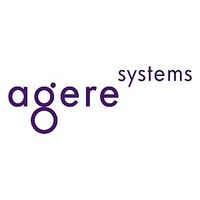T7256 Agere Systems, T7256 Datasheet - Page 41

T7256
Manufacturer Part Number
T7256
Description
(T7234 - T7256) Compliance
Manufacturer
Agere Systems
Datasheet
1.T7256.pdf
(60 pages)
Available stocks
Company
Part Number
Manufacturer
Quantity
Price
Company:
Part Number:
T72561ML
Manufacturer:
LUCENT
Quantity:
19
Company:
Part Number:
T7256A-ML
Manufacturer:
SAMSUNG
Quantity:
4 443
Part Number:
T7256ML2
Manufacturer:
LUCENT
Quantity:
20 000
Part Number:
T7256MLZ
Manufacturer:
LUCENT
Quantity:
20 000
Lucent Technologies Inc.
February 1998
Questions and Answers
S/T-Interface
Q32: I notice that the application note entitled Design
A32: The relay on the TE transmitter output is neces-
Q33: The T7234 reference design in Figure 12 shows
A33: Typically, a TE or group of TEs connected to an
an S/T Line Interface Circuitry Using the T7250C/
T7259 recommends relays on both the transmit-
ter and receiver outputs that disconnect the
device when power is removed from the chip. Is
this necessary for an NT using the T7234?
sary to pass the peak current test (ITU-T I.430
Section 8.5.1.2 and ANSI T1.605-1991, section
9.5.1.2) when the TE is powered down. For the
NT, there is no equivalent test, so the relay is not
necessary. The relay on the TE receiver input is
also necessary to pass the peak current test
(ITU-T I.430 Sections 8.5.1.2 and 8.6.1.1, and
ANSI T1.605-1991 Sections 9.5.1.2 and 9.6.1.1).
For the NT, however, there is enough margin in
the line interface capacitance circuitry such that
the peak current requirement (ITU-T I.430 Sec-
tion 8.6.1.2 and ANSI T1.605-1991 Section
9.6.1.2) can be met without using relays. This
assumes, of course, that sound layout practices
have been applied to keep parasitic capacitance
of the line interface circuitry to a minimum (of pri-
mary importance is making sure there is no
ground plane under the S/T line interface). The
reason the TE needs a relay on its receiver is that
the TE tests assume a 350 pF cord connected to
the line, and this extra capacitance can cause the
peak current requirement to be exceeded. So
even though the NT peak current requirement
is slightly more stringent (0.5 mA as opposed to
0.6 mA), the TE peak current test is the most diffi-
cult to meet due to the 350 pF cord capacitance.
100
ond pair of optional 100
inserted or removed by installing/removing jump-
ers from JMP1 and JMP2. What is the purpose of
this second pair of resistors?
NT1 will have a 100
interface point of the TE farthest from the NT1
(refer to ITU-T I.430 Figure 2 and Section 4 or
T1.605 Figure 2 and Section 5). However, in
some cases it may be desirable to operate an
NT1 with a TE that does not provide the 100
termination impedance. In this case, the provi-
sional 100
installed to provide the extra termination imped-
ance required.
termination resistors in parallel with a sec-
(continued)
resistors shown in Figure 12 may be
termination located at the
resistors that can be
(continued)
T7234 Single-Chip NT1 (SCNT1) Euro-LITE Transceiver
Q34: I would like to integrate a T7234-based NT1 onto
A34: Yes. First note Figures 17, 18, and 19, which
T7903/T7250C Transmit to T7234 Receive
both a T7250C-based 4-wire TE product and a
T7903-based 4-wire TE product in order to pro-
vide a U-interface on these products. I realize this
can be done by simply incorporating my external
NT1 design directly onto the TE board, but is
there a simpler approach in which I can avoid
having two sets of S/T transformers and associ-
ated line interface circuitry?
show examples S/T line interface circuits for the
T7234, T7903, and T7250C, respectively. If no
external S/T-interface connection is required, the
T7234 can be directly connected to the T7903
and T7250C as shown in Figures 20 and 21. If
there is a requirement for connecting external
TEs, the circuits shown in Figures 22 and 23 can
be used. These two circuits show a hybrid
scheme in which a direct connect between the
T7234 and T7903/T7250C is implemented while
providing for an external S/T-interface (thus
requiring only one set of S/T transformers rather
than the two sets that would be required if the
T7234 and T7903/T7250C were transformer-cou-
pled to one another instead directly connected).
The direct connect circuits were derived as
shown in Figures 20 and 21 and the following text
sections:
Note:
a) Transmitter Load:
T7903: The line interface transformer has a
turns ratio of 2.0, and the transmitter drives a
total line-side load of 50 . Reflecting this
impedance to the device side of the trans-
former results in 200
resistance, combined with the 40
resistance of the device-side resistors,
results in a total of 240
typically drives.
So, to optimize the transmitter part of the cir-
cuit based on the load the transmitter expects
to drive, the transmitter should see a total
resistance of approximately 240 .
In all of these analyses, the final value of
resistance chosen may be slightly differ-
ent than the ideal value computed
because standard resistance values
were used.
(50
that the transmitter
x N
2
). This
total
37












